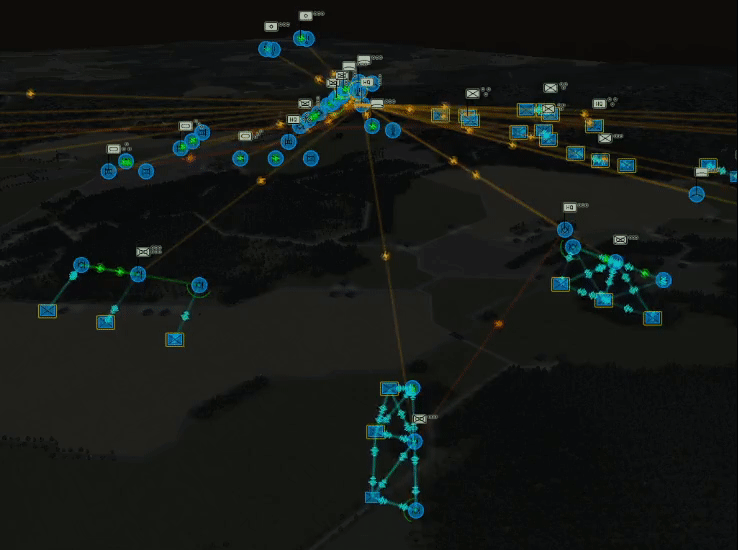Greetings Commanders!
In this installment of our development diary, we commence with a succinct reference to a significant event from the past, predating the Cold War period. In the annals of military history, few incidents cast as stark a light on the importance of communication as the British Light Brigade's suicidal charge during the Crimean War in October 1854. This bloody episode, marked by Captain Lewis Nolan’s ambiguous transmission of Lord Raglan’s ill-conceived orders and observed in disbelief by stunned allies and foes alike, serves as a poignant reminder of how the essence of warfare hinges on seamless information exchange. As we have always upheld the importance of this concept, reflected in our simulation of command order delay, we now push the envelope further with advanced spotting information sharing mechanism. This diary will explore the intricacies of this enhanced information exchange and spotting between units, as well as introduce redefined company structures, internally known as 'parent formations,' offering unprecedented flexibility in tactical planning.

In the original game, once a hostile contact was identified, it became globally known; however, a friendly unit still needed to scan in that direction to engage it. Nevertheless, this often led to fairly rapid target engagement times by distant units, an aspect we believed could be further improved. In addressing this, we looked into integrating a system that mimics real-world military communication procedures. The chain of command represents the path that orders and reports take between HQs and their subordinate units. Normally, orders travel "down the chain", that is, from higher HQ’s to a lower subordinate unit (depicted as the order delay), while reports (such as CONTACT or SPOTREPs) travel both up and down the chain (sharing spotting information).

A key challenge was ensuring the spotting mechanism itself remained undisrupted. This intricate setup necessitated meticulous implementation to ensure that the enhancements implemented did not inadvertently undermine the existing effectiveness or lead to gameplay issues for players. The system operates like a tree structure hierarchy, where communication across different branches is funneled through the nearest common node, except in cases where the units are in close physical proximity.

To illustrate this with a practical example: suppose an individual tank has spotted a hostile contact. Tank commander will report this at the platoon level, which will then be relayed by the platoon commander up the chain to the company headquarters. Here, the information spreads on two levels: upwards to other headquarters within the communication network, and downwards to other platoons or sections. This feature allows units to share critical battlefield intelligence more realistically, elevating the strategic depth of gameplay.

Similar to how a wildfire ignites and spreads rapidly, so does information in our simulation. While initial contact reports are swiftly shared at the local level, wider dissemination to units in different positions, like those on another flank or support units in the rear, takes more time, unless these units independently detect the enemy. With radio communication offering instant connectivity, the importance of physical distance between units is lessened, except in cases where direct voice or hand gestures are used. Additionally, the level of training is crucial; well-trained personnel are more likely to communicate clearly and precisely, and handle stress and panic more effectively.

Which brings us to the second revolutionary novelty: redefined company structures. Companies are no longer single, bulky entities comprising a certain number of individual vehicles or units. Instead, they now possess a proper structure consisting of sub-formations; for example, a company might include an organic HQ section and a certain number of platoons. The benefit is twofold: players can issue a command to the whole company to ease the management of larger battles, or they can micromanage individual sub-formations. By integrating this concept, Armored Brigade facilitates a more dynamic and responsive tactical experience for the player. This enhancement additionally enables a more precise recreation of historical military structures, such as reconnaissance or weapons support companies.

This new parent company structure is closely intertwined with information sharing, as sub-formations maintain a fixed connection with their default HQ. This HQ can be eliminated and, where possible, replaced by an acting leader, albeit with certain penalties. This development marks a significant leap in our commitment to providing a realistic and strategically rich warfare simulation. Designed with modularity in mind, the new system lays the groundwork for easily incorporating future features, including expanded communication methods and electronic warfare capabilities.
We will share more details about these exciting developments in our future updates.
Until then, commanders, roll out the tanks












